Day 1 — Sunday, Nov. 5
All times are Central Standard Time.
Display Preferences
Hide/Show
8:00 a.m.–8:30 a.m. | Delta Ballroom A | General
President’s Welcome Address
Carl Hinkson, MSc, RRT, RRT-ACCS, RRT-NPS, FAARC
Show description

AARC President Carl Hinkson will kick off Congress 2023 with a welcome address to attendees. He will discuss Congress highlights and recent impacts the AARC has had on the profession. You won't want to miss this address, as Carl will be premiering the new AARC brand and logo.
8:40 a.m.–9:40 a.m. | Delta Ballroom A | General
Keynote
Breathe In Possibility, Breathe Out Purpose
Sharon Newport, CAE
Show description

An inspiring and interactive keynote to align the power of the individual care provider and collective impact of the respiratory therapy profession. When ME and WE align we can wield the power of the individual and the community to help transform lives and make a lasting impact. Leave this keynote with a fresh perspective that will open your heart and your mind to new possibilities and a renewed purpose.
Sharon Newport, CAE, is an organizational consultant, facilitator, speaker, and executive coach with clients in the nonprofit and for-profit sectors across the globe. Sharon supports her clients’ goals of transformational change using expertise in organizational development, diversity, equity, and inclusion to support organizations in their goals to evolve. Sharon also serves as adjunct faculty at Georgetown University’s Institute of Transformational Leadership.
10:00 a.m. | Ryman Hall C | General
Opening of the Exhibit Hall
Show description
The AARC President and President-Elect open the Exhibit Hall during the annual ribbon cutting ceremony at 10:00 a.m. The Exhibit Hall will be open from 10:00 a.m.–3:00 p.m. on Sunday.
11:00 a.m.–12:30 p.m. | Presidential A | Students
Making Connections: Student Speed Networking Event
Show description
Students are invited to start out this year’s Congress with an engaging, fast-paced networking experience. Participants in this kickoff networking session will meet influential individuals from the respiratory care community who may have a long-lasting impact on their career. First come, first served. Student attendees only.
12:00 p.m.–1:55 p.m. | Bayou AB | General
Open Forum Poster Discussion #1: Aerosol Therapy
Show description
Researchers present the results of their work. Authors briefly present their findings and engage in an open discussion with the attendees.
Supported by an unrestricted educational grant from
12:00 p.m.–1:55 p.m. | Bayou CD | General
Open Forum Poster Discussion #2: Education Part 1
Show description
Researchers present the results of their work. Authors briefly present their findings and engage in an open discussion with the attendees.
Supported by an unrestricted educational grant from
12:40 p.m.–4:15 p.m.
Symposium
New Horizons Symposium
12:40 p.m.–1:15 p.m. | Delta Ballroom B | Adult Acute Care
Inhaled Anesthetics for ICU Sedation
Jeremy Beitler, MD, MPH
Show description

Inhaled anesthetic agents have a rapid effect and may limit adverse effects of opioids and benzodiazepines in critically ill mechanically ventilated patients. In previous years, this required anesthesia machines to be moved into the ICU. New technology makes this therapy more easily delivered using traditional ventilators. This new technology must be understood by respiratory therapists to assure safety and effectiveness. Inhaled agents also have a number of benefits related to inflammation and patient tolerance.
1:25 p.m.–2:00 p.m. | Delta Ballroom B | Adult Acute Care
Optimal Post-Extubation Support in Adults
Oriol Roca, MD, PhD
Show description
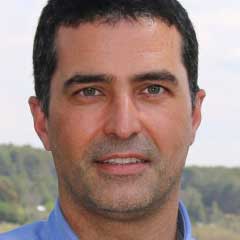
Post-extubation respiratory failure aims to avoid re-intubation by matching therapy to the physiologic derangements. CPAP, NIV and HFNC have all been touted as possible therapies to prevent re-intubation. Obesity, comorbid conditions (COPD, etc.) and severity of illness all conspire to make these choices difficult. Which patients respond to post-extubation treatment and what are the keys to success?
2:10 p.m.–2:45 p.m. | Delta Ballroom B | Adult Acute Care
Ventilation and Oxygenation during CPR—Changing Paradigms
Brady Scott, PhD, RRT, FAARC
Show description
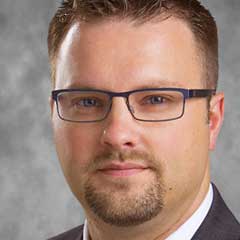
Ventilatory support during CPR has undergone whole scale revision in the last decade. Minute ventilation and respiratory rate requirements have been altered, and in lay rescue CPR, hands only CPR has been advocated. More recent evidence suggests even a few breaths per minute can have positive impacts. Oxygen delivery in CPR has also received more attention as hyperoxia as well as hypoxia can have consequences.
2:55 p.m.–3:30 p.m. | Delta Ballroom B | Adult Acute Care
Imaging the Lung in ARDS
David Kaczka, MD, PhD
Show description
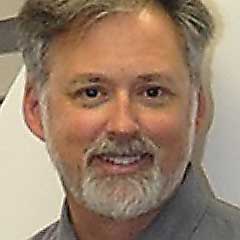
Much of our understanding of ARDS has come from imaging studies to define the baby lung. CT images, electrical impedance tomography and other techniques provide information regarding lung collapse and overdistension. The future of imaging is at the bedside where detailed data can be gleaned, and actionable information can be provided. A multitude of imaging methods provide promise for improving the safety of mechanical ventilation.
3:40 p.m.–4:15 p.m. | Delta Ballroom B | Adult Acute Care
Ventilatory Support in the Brain Injured Patient
Richard Branson, MSc, RRT, FAARC
Show description
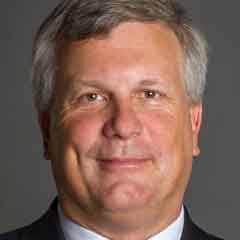
Traumatic brain injury is a common and devastating injury requiring intensive care and mechanical ventilation. The days of hyperventilating patients with elevated ICP have past as a more complete understanding of physiology allows a more nuanced approach to ventilation and oxygenation. Oxygen targets in head injury are debated as both hypoxia and hyperoxia have consequences. Lung protective ventilation must be coupled with brain protective approaches as it relates to PEEP and minute ventilation.
12:40 p.m.–4:15 p.m.
Symposium
Foundations Update
12:40 p.m.–1:15 p.m. | Canal AB | Diagnostics/PFT
Radiographic Imaging (CXRs and CT scans) — Interpretation
Brian Carlin, MD, FAARC, MAACVPR
Show description
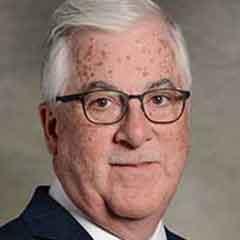
Radiographic imaging is an essential component in the evaluation and management of a patient with lung disease/critical illness. Chest roentgenography and computed tomography are used in nearly every patient who is hospitalized, particularly those with critical illness. The respiratory therapist must be familiar with the various interpretations of such testing. This session is part of a symposium applying a case-based approach to the interpretation of various types of testing commonly seen by the respiratory therapist. A review of a variety of CXRs and CT scans will be the basis for this session.
1:25 p.m.–2:00 p.m. | Canal AB | Diagnostics/PFT
Arterial Blood Gases — Interpretation
Sara Mirza, MD, MS
Show description

Arterial blood gas testing is an essential component in the evaluation and management of patients with chronic lung disease and critical illness. The respiratory therapist must be proficient in the interpretation of such testing. This session is part of a symposium applying a case-based approach to the interpretation of various types of testing commonly seen by the respiratory therapist. A series of arterial blood gas cases will be reviewed during this session.
2:10 p.m.–2:45 p.m. | Canal AB | Diagnostics/PFT
Ultrasounds
Sara Mirza, MD, MS
Show description

Ultrasound technology is becoming much more widely used in the evaluation and management of patients who are hospitalized. This technique is being used for vascular, lung, and cardiac diagnoses and therapeutics. The respiratory therapist should be familiar with the technique and the various findings associated with the use of ultrasound. This session is part of a symposium applying a case-based approach to the performance and interpretation of various types of testing commonly seen by the respiratory therapist. A series of cases using ultrasound technology will be provided in this session.
2:55 p.m.–3:30 p.m. | Canal AB | Diagnostics/PFT
Diagnostic Bronchoscopy
Michael Davis, RRT, PhD, FAARC
Show description
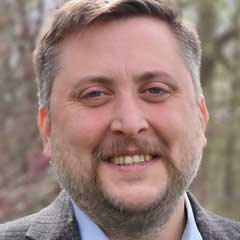
Diagnostic bronchoscopy is an essential diagnostic tool in the evaluation and management of patients with lung disease. The respiratory therapist is a key member of the bronchoscopy team and must be familiar with the various types of testing procedures that can be performed (airway evaluation, endoscopic ultrasound, needle aspiration, biopsy) as well as appropriate sedation techniques and availability of appropriate equipment. This session is part of a symposium applying a case-based approach to the performance and interpretation of various types of testing commonly seen by the respiratory therapist. A review of a variety of diagnostic bronchoscopy cases will be the basis for this session.
3:40 p.m.–4:15 p.m. | Canal AB | Diagnostics/PFT
Pulmonary Function Testing — Interpretation
Neil MacIntyre, MD, FAARC
Show description
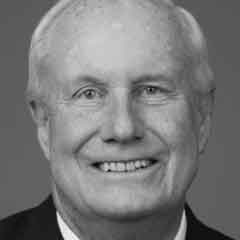
Pulmonary function testing is a core component of the education of every respiratory therapist and forms the basis for the evaluation and management of patients with lung disease. This session is part of a symposium applying a case-based approach to the interpretation of various types of testing commonly seen by the respiratory therapist. The interpretation of various types of pulmonary function testing using the latest evidence will be the basis for this session.
12:40 p.m.–2:00 p.m.
Symposium
Building the Educator Pipeline
12:40 p.m.–1:15 p.m. | Washington B | Education
Making the Leap: Leaving the Bedside for a Faculty Position
Christy Kane, PhD, RRT, RRT-ACCS, FAARC
Jose Rojas, PhD, RRT, FAARC
Show description

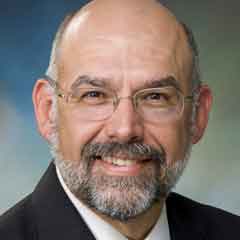
Seasoned respiratory care educators are retiring at an alarming rate, leaving significant vacancies across the educational community. Bedside clinicians are a primary source in the educator pipeline, but making the leap can be intimidating! Join two experienced educators to discuss the opportunities and challenges for new faculty.
1:25 p.m.–2:00 p.m. | Washington B | Education
Climbing the Academic Ladder
Christy Kane, PhD, RRT, RRT-ACCS, FAARC
Jose Rojas, PhD, RRT, FAARC
Show description


You’re a seasoned educator ready to take the next step … or are you? This session is for mid-career faculty seeking advancement in academia. Join two experienced academic leaders to discuss everything from tenure and promotion to mentorship and scholarship.
12:40 p.m.–1:15 p.m. | Delta Ballroom | Leadership & Management
Facing the Future: Challenges of the Advanced Practice Respiratory Therapist
William Croft, EdD, RRT, RRT-NPS, FAARC
Show description
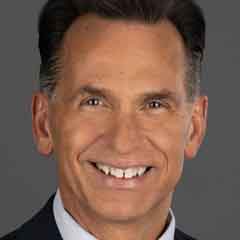
The COVID-19 pandemic has presented the profession with many challenges, but it has also presented opportunities for the profession to grow. As a result, the idea of the Advance Practice Respiratory Therapist has moved beyond a dream into reality. However, it is not without challenges. This lecture will cover some of the most pressing issues we face.
12:40 p.m.–1:15 p.m. | Delta Ballroom D | Neonatal/Pediatrics
The Golden Hour: Standardization and Best Practices
Kevin Dysart, MD, MBI
Show description
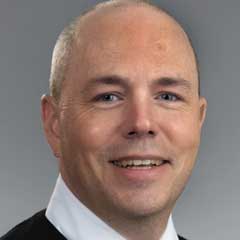
The Golden Hour is rightfully named for the importance of time to stabilization and the impact it has on short-term and long-term outcomes for the neonate. Golden Hour protocols must become standardized and seamlessly implemented at birth centers. By identifying clear goals for the first 60 minutes of life, the risks of morbidity and mortality for VLBW/ELBW neonates are reduced.
1:25 p.m.–2:45 p.m.
Symposium
Developing Your Team
1:25 p.m.–2:00 p.m. | Delta Ballroom C | Leadership & Management
Developing Staff Through All Stages of a Career
Carrie Coffman, RRT
Show description
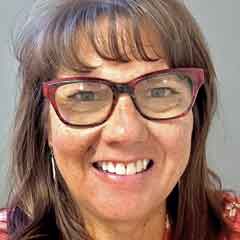
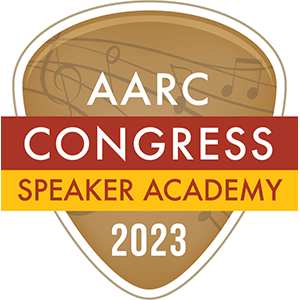
As a leader it is vital to look for ways to encourage and develop staff regardless of where they are in their career. Developing staff is one tactic leaders can employ to enhance engagement, retention, and recruitment. The presenter will identify strategies to address individual professional development goals across the continuum of a career from early professional to nearing retirement.
2:10 p.m.–2:45 p.m. | Delta Ballroom C | Leadership & Management
New Graduate Residency Programs: A Panel Discussion
Meliza Alvarez, RRT, RRT-NPS, AE-C
Emilee Lamorena, MSc, RRT, RRT-NPS
Nora Scotch, BS, RRT
Show description


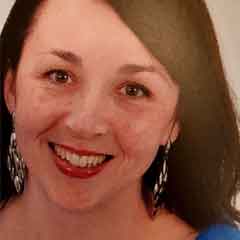
The transition from student to professional can be challenging; for this reason, many hospitals have created new graduate residency programs. During this panel presentation, leaders from multiple organizations will discuss why they started a residency program, how it has impacted the new graduate onboarding experience, and the advice they have for those looking to develop a program of their own.
1:25 p.m.–2:00 p.m. | Delta Ballroom D | Neonatal/Pediatrics
Preventing Unplanned Extubation in the NICU
Traci Wolfe, MS, RRT, RRT-NPS, C-ELBW
Show description
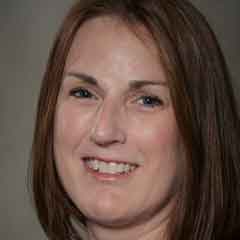
Unplanned extubations (UEs) in the NICU are associated with increased ventilator days, hospital length of stays, and cost. Up to 20% of UEs have been reported to result in cardiovascular collapse and cardiac arrest. To prevent UEs from occurring, standardized processes shown to be effective can be put in place. In addition, when an event does occur, the root cause must be determined. This presentation will review key drivers used in the NICU to prevent UE, introduce less frequently discussed factors, and identify strategies to answer the question, “Why did this UE occur?”
2:10 p.m.–2:45 p.m. | Washington B | Education
Energize Students: Foster Active Learning in Your Classroom
Lauren Driscoll, MHPE, RRT, RRT-ACCS, RRT-NPS
Show description
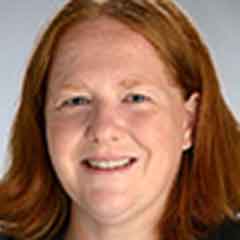
Have you struggled with re-engaging students with the transition back to in-person education? Hybrid and online learning environments changed the way students approached learning, and now students are struggling to reconnect themselves. One way to help students become engaged and energized is the integration of active learning strategies. This lecture will discuss active learning strategies that faculty and educators can utilize to jumpstart student engagement within different learning environments.
2:10 p.m.–2:45 p.m. | Delta Ballroom D | Neonatal/Pediatrics
The Evolution of BPD: Past, Present, and Future
Katlyn Burr, RRT, RRT-NPS, AE-C
Show description
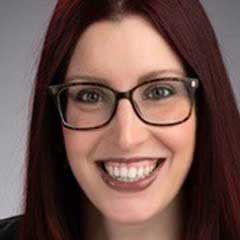
Bronchopulmonary dysplasia (BPD) was first introduced in the 1970s, with a limited description on characteristics of the disease. Over the past 40+ years, BPD diagnosis, classifications, and recommendations for treatment have evolved to address the complex manifestations of the diagnosis. This lecture will cover modern BPD and outcomes for this vulnerable patient population.
2:30 p.m.–4:25 p.m. | Bayou AB | General
Open Forum Poster Discussion #3: Airway Management
Show description
Researchers present the results of their work. Authors briefly present their findings and engage in an open discussion with the attendees.
Supported by an unrestricted educational grant from
2:30 p.m.–4:25 p.m. | Bayou CD | General
Open Forum Poster Discussion #4: Education Part 2
Show description
Researchers present the results of their work. Authors briefly present their findings and engage in an open discussion with the attendees.
Supported by an unrestricted educational grant from
2:55 p.m.–4:15 p.m.
Symposium
Finding Your Place in the Profession
2:55 PM - 3:30 | Washington B | Education
Oh, the Places You’ll Go! Professional Engagement in Respiratory Care
Gabrielle Davis, MPH, MA, RRT
Samantha Davis, RRT, CHSE, FAARC
Show description
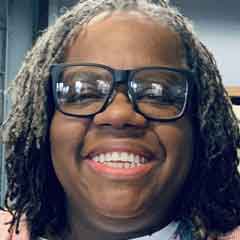

After long days and late nights, you earned your credentials and entered the respiratory care profession! Now what? This session will leverage the presenters’ experiences to build a roadmap toward professional engagement.
3:40 p.m.–4:15 p.m. | Washington B | Education
AE-C, What's in it for Me?
Linda Nozart, MPH, RRT, AE-C
Show description

Respiratory therapists are well-positioned to address persistent and ongoing challenges in asthma management. This session will highlight important patient-centered skills and personal characteristics needed to become a successful Asthma Educator Specialist, as well as how to land jobs in this role.
2:55 p.m.–4:15 p.m.
Symposium
Enhancing Team Recognition and Engagement
2:55 p.m.–3:30 p.m. | Delta Ballroom C | Leadership & Management
Creating a Sense of Belonging to Foster Engagement
Ramona Burke, MA, RRT, RRT-ACCS
Show description
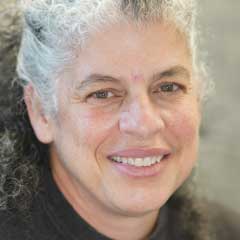

When staff feel recognized and cared for, and they have opportunities to learn, grow, and share their opinions—that creates a sense of belonging. Leaders can influence the sense of belonging within their team to retain valuable employees and improve job satisfaction. In this presentation, we will discuss the various indices of belonging that most affect employee engagement. We will discuss specific strategies and tips that you, as leaders, can use to create a sense of belonging and foster engagement in your institution.
3:40 p.m.–4:15 p.m. | Delta Ballroom C | Leadership & Management
Utilizing the Love Languages to Recognize Your RTs
Joel Brown, MSM-HCA, RRT, FAARC
Show description

The book, “The 5 Love Languages,” has sold over 20 million copies and has improved couples’ relationships for over 30 years. It identifies how the people you love like to be recognized and appreciated. This is a concept that can be utilized in leadership. Often leaders go out of their way to recognize their teams and don’t get a return on their investment. In this lecture, the audience will learn how to acknowledge their team’s hard work and dedication in the way they want to be acknowledged using 4 out of the 5 strategies identified in “The 5 Love Languages”: Quality Time, Words of Affirmation, Gifts, and Acts of Service. Time will be spent at the end of this lecture engaging with the audience to hear their thoughts, experiences, and recognition ideas.
2:55 p.m.–3:30 p.m. | Delta Ballroom D | Neonatal/Pediatrics
Ventilator Management in Chronic Neonatal Lung Disease of Prematurity
Kevin Dysart, MD, MBI
Show description

The trend in mechanical ventilation has traditionally been to focus on lung protective approaches. In infants with chronic lung disease of prematurity, prescribing large tidal volumes, long inspiratory times, low respiratory rates, and high positive end expiratory pressure has fallen into favor. This lecture will discuss justification for these “unconventional” settings and explore considerations for choosing when to utilize the chronic lung ventilation strategy.
3:40 p.m.–4:15 p.m. | Delta Ballroom D | Neonatal/Pediatrics
Trauma-Informed Care in Neonatal Pediatrics
Danielle Milliken
Show description
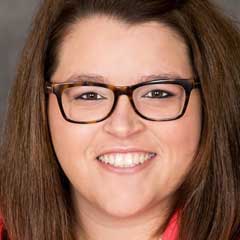
Trauma is the result of an event or experience that puts an individual through significant stress. Marginalized populations are at higher risk of experiencing the negative impacts of trauma and oftentimes have limited resources to address their needs. By incorporating a trauma-informed approach into clinical practice, providers can be better equipped to treat the patient holistically and improve long-term health outcomes.
4:30 p.m.–6:00 p.m. | Delta Ballroom A | General
Awards Ceremony
Daniel D. Garrett, CAE
Show description

This ceremony recognizes the “doers” in the profession, from students to long-established practitioners. Be there and applaud your peers. Today it’s them; tomorrow it could be you!
8:00 p.m.–10:00 p.m. | Presidential Ballroom CE | General
Welcome Party
There are no sessions that match your display preferences.

